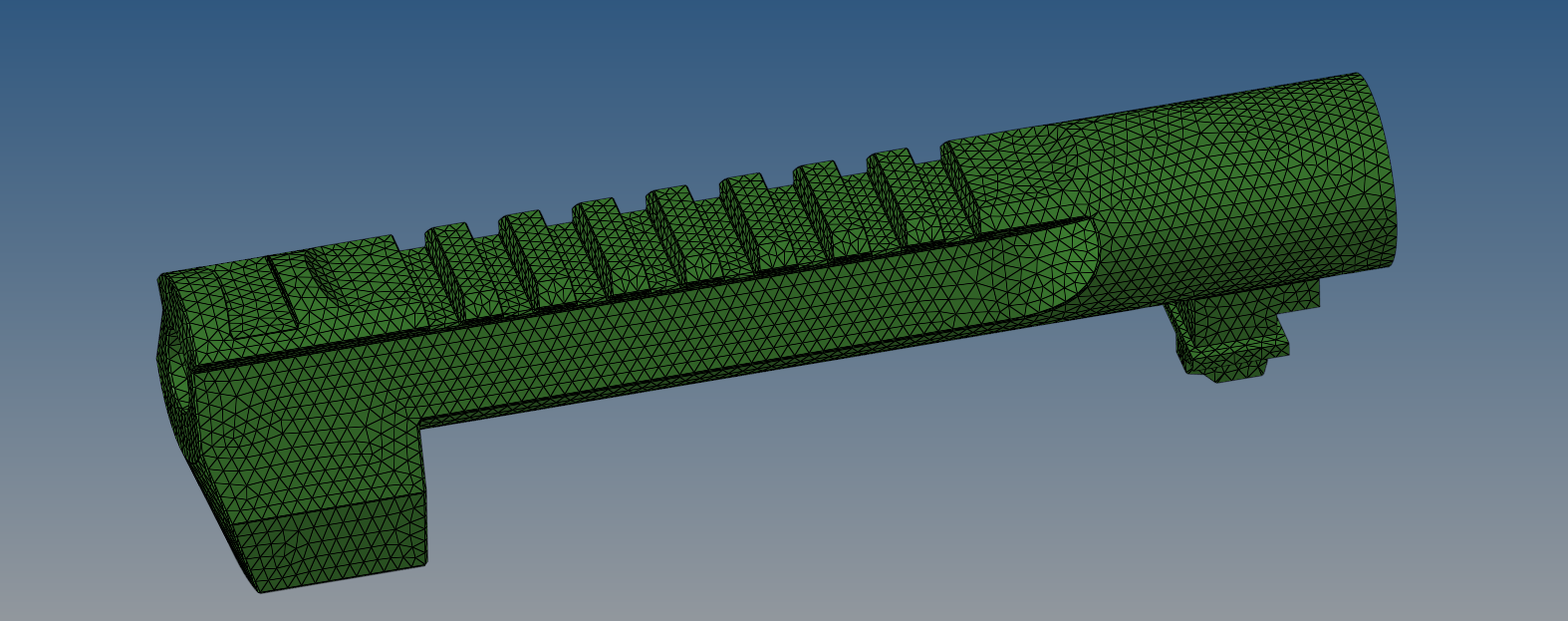In this post, we are going to learn about different FEA solvers and what the differences are between Nastran, Optistruct, Radioss, and Abaqus solvers, and when we use them.
If you have read my post on FEA packages, you would recall that there are three parts of an FEA package: pre-processor, solver, and post-processor. If you have not read that post, you can read it here.
So what are solvers?
Solvers are software used to solve the models meshed in pre-processing software. Optistruct and Nastran are solvers. Optistruct is a product by Altair, whereas Nastran is a product by MSC.
Optistruct
Optistruct is a solver which comes in the FEA package of Altair. Apart from solving different analysis requirements, Optistruct gives optimization solutions.
It utilizes gradient-based optimization algorithms to solve optimization problems. Some of these algorithms are methods of Feasible Directions (MFD), Sequential Quadratic Programming (SQP), Dual Optimizer based on separable convex approximation (DUAL), Level Set Method, DTPL, and DSIZE, etc. These algorithms can be used for composite and free-size optimization, as well as Failsafe topology optimization (FSO) for structures.
You can read more about Optistruct techniques for advanced optimization here.
Optistruct is preferred for optimization over analysis.
Nastran
Nastran was originally developed by NASA. MacNeal-Schwendler Corporation (MSC) was one of the principal developers of the publicly available Nastran. You can read more about its history here.
It is a powerful finite element analysis (FEA) software that has been used and validated by experts in structural analysis for half a century. It’s renowned for its robustness, accuracy, and ability to address a wide range of engineering challenges. The solving algorithms used by Nastran are Direct solvers, iterative solvers, and eigenvalue solvers.
These solvers rely on LDLT decomposition and are widely used in structural analysis. They derive solutions that are insensitive to the numerical characteristics of the stiffness matrix.
Direct solvers involve factorizing the symmetric stiffness matrix into a lower triangular matrix, forward elimination, and backward substitution (FBS) to solve the system. Direct solvers: MSC Sparse Direct solver (MSCLDL), Pardiso solver (PRDLDL), MUMPS solver (MUMPS and MUMPSBLR)
Iterative solvers: These solvers iteratively refine the solution until convergence is achieved. They are useful for large-scale problems with sparse matrices.
Eigen Value Solvers: These solvers compute eigenvalues and eigenvectors. Modal analysis is one such analysis. if you haven’t read about modal analysis, you can read it here.
In summary, MSC Nastran provides a variety of solvers to tackle different analysis types, including statics, eigenvalues, dynamics, and nonlinear simulations.
You can read more about these solver algorithms here.
Radioss
Radioss is a finite element analysis (FEA) solver developed by Altair Engineering. It is commonly used for simulating complex mechanical behavior, such as crash analysis. Some of the key algorithms used in Radioss are mentioned below.
Linear Static Solver: Handles linear static problems where material behavior remains in the elastic range. Assumes stiffness matrix remains constant throughout the simulation.
Nonlinear Static Solver: This type of solver handles nonlinear static analysis. Here material behavior can be nonlinear, that is, in elastic as well as plastic regions. The solver iteratively updates the stiffness matrix based on the current state of deformation. It is mainly used for solving contact, material, and geometric nonlinearity problems.
Explicit Solver: These are primarily used for dynamic simulations such as crash tests, and impact analysis. Unlike implicit solvers, explicit solvers do not require solving a system of equations at each time step. However, they are less efficient for quasi-static or static simulations due to their explicit time integration scheme.
Contact Algorithms: These solvers detect contact, process contact, and update contact forces during simulation. These include tied surfaces, penalty methods, and Lagrange multiplier methods.
You can read more about Radioss here.
Abaqus
Abaqus is developed by Dassault Systèmes for Finite Element Analysis.
Linear Solvers: Linear domains mean the solver mainly focuses on scenarios without contact, large deflections, and material behavior after yield. They provide extremely fast results. These often serve as starting points for more advanced analyses such as NVH and durability.
Complex Eigenvalue extraction: It extracts complex components of eigenvalue problems.
Steady-State Dynamic Analysis: Abaqus offers several techniques for steady-state dynamic analysis, including mode-based, subspace-based, and direct solution steady-state analysis.
Other solvers: Other solvers include CFD solver and electromagnetic solver
In summary, Abaqus has wide support for different analyses. You can read more about Abaqus here.
LS-Dyna
LS-Dyna is an Explicit and Implicit solver focused on explicit dynamics.
It is an Industry leader in explicit dynamic simulations. It handles high-speed events like crashes, explosions, and penetration. Typical applications include crash simulations (vehicle impacts, airbag deployment, seatbelt tensioning), Metal forming (stamping, forging, hydroforming), Explosion and penetration modeling, Biomechanical simulations (e.g., head trauma analysis in sports). It offers fluid-structure interaction (FSI) and advanced contact algorithms.
It has a vast library of materials, namely metals, plastics, foams, fabrics, and concrete. It also has support for SPH, ALE, DEM, and other particle-based methods. It has a relatively steeper learning curve, but extremely powerful.
Typical industries of use include Aerospace, Defence, Automotive, manufacturing, and biomedical.
This is all for this post. Tell me your thoughts in the comments section. Don’t forget to follow my Facebook and Instagram pages for regular updates. See you all in the next post. Till then, keep learning.
